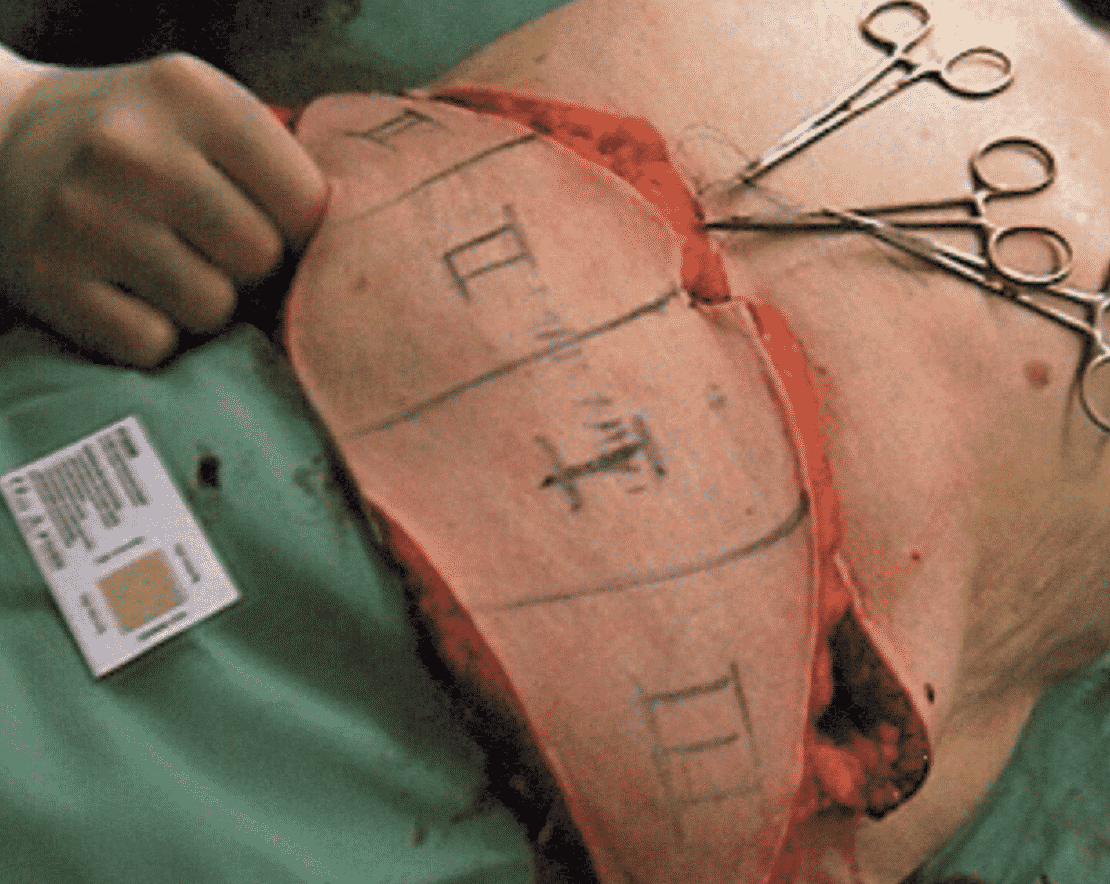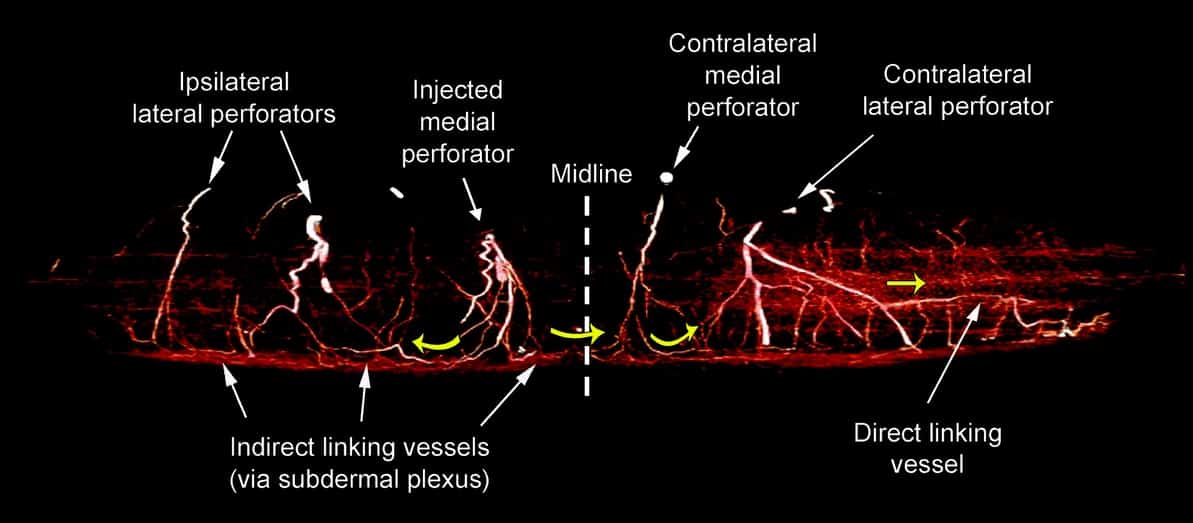Basis
Hartrampf’s Zones of Perfusion refers to the subdivision of the lower abdominal flap into 4 equal zones based on their level of perfusion and viability.

Zones I-IV
Identifying the zones
- Divide lower abdominal flap at midline to form 2 hemi-abdomens.
- Zone I always correlates to the zone of selected perforator.
- Zone II is adjacent to zone I on the contralateral hemi-abdomen.
- Zone III is lateral to zone I
- Zone IV is lateral to zone II
Clinical Significance
- Zone I: most perfused and is the most reliable for flap reconstruction.
- Zone IV: most distant one, least perfused and unlikely to be viable.

Evolution
The Origin of Zones of Perfusion
Whilst initially described by Scheflan and Dinner for a unipedicled TRAM flap, Hartrampf’s name has been associated with the zones after his paper on TRAM flap for breast reconstruction.
Holm’s Modification
Further studies have casted a shadow on the strictness of Hartrampf’s Zones of Perfusion.
1 year after Hartrampf’s paper, Dinner’s study suggested zones II and III should be switched. This was later confirmed by Holm et al in a fluorescent perfusion study.
Saint-Cyr’s Modification
There is often confusion regarding which is more accurate, Hartrampf’s or Holm’s Zones.
Saint-Cyr et al clarified zones of perfusion with 3D and 4D CTA studies. The zones depend on the row position of the perforator harvested.
- Medial row of perforators have a more centralised perfusion, therefore Hartrampf’s classification is valid.
- Lateral row of perforators have a more lateral perfusion, therefore Holm’s classification is valid.

Saint-Cyr et al also introduced the perforasome concept and the perforasome Zone’s of perfusion.
Sources
- Dinner MI, Dowden RV, Scheflan M. Refinements in the use of the transverse abdominal island flap for postmastectomy reconstruction. Ann Plast Surg. 1983 Nov;11(5):362-72.
- C. R. Hartrampf’s Jr., B. J. Michelow. Hartrampf’s Breast Reconstruction with Living Tissue. (New York, Raven Press, 1990)
- Holm C et al. Perfusion zones of the DIEP flap revisited: a clinical study. Plast Reconstr Surg. 2006 Jan;117(1):37-43.
- Saint-Cyr M. Assessing perforator architecture. Clin Plast Surg. 2011 Apr;38(2):175-202. doi: 10.1016/j.cps.2011.03.015.


